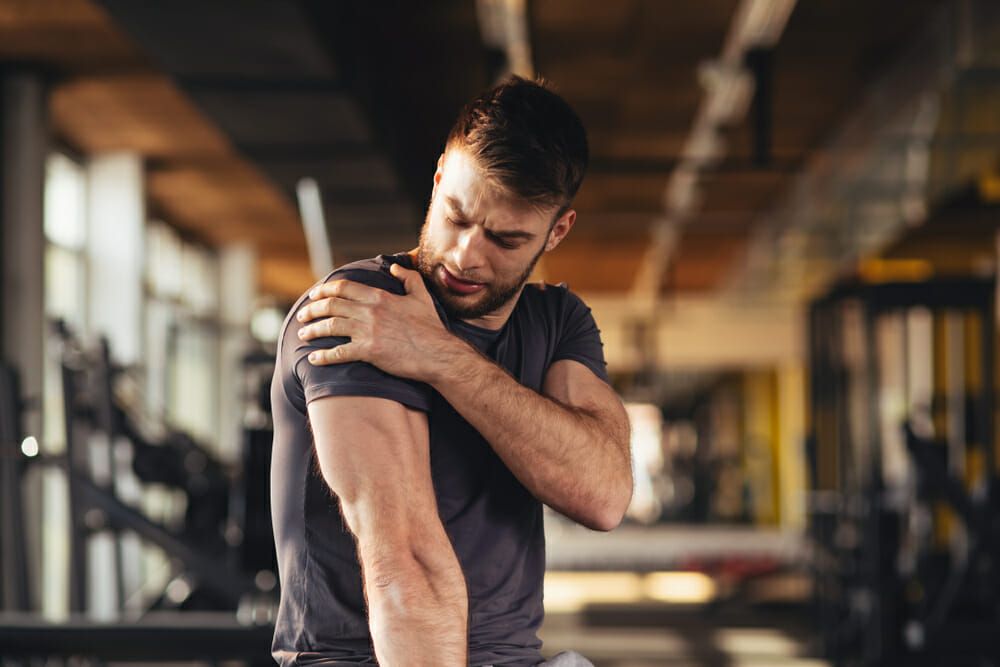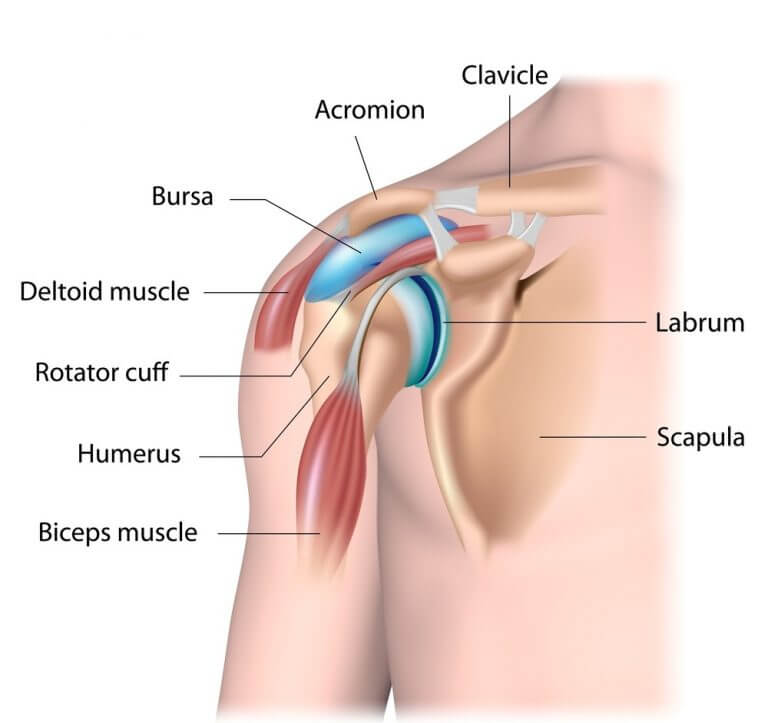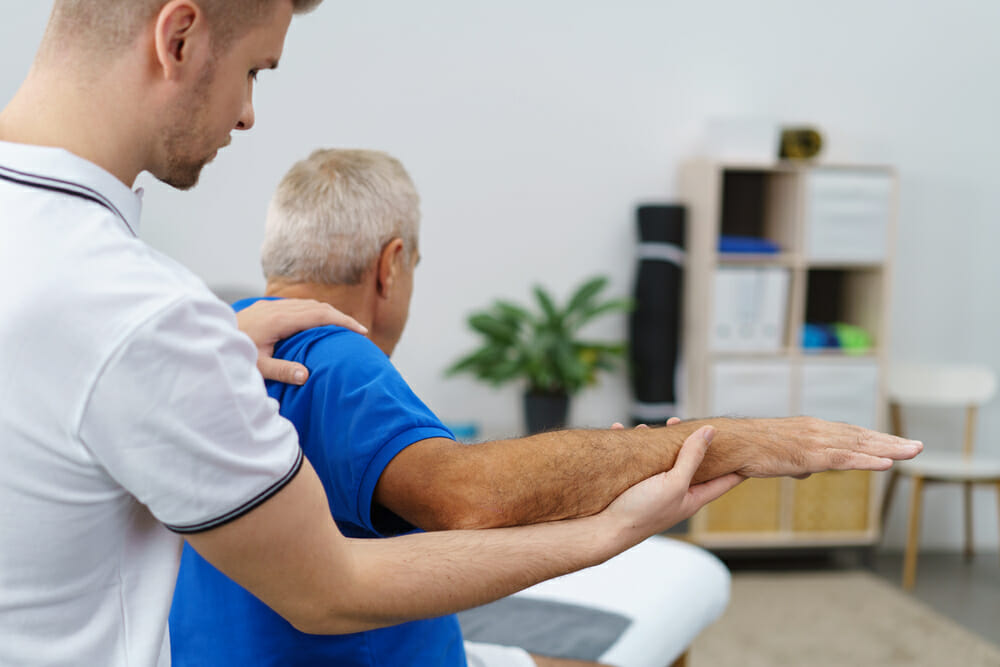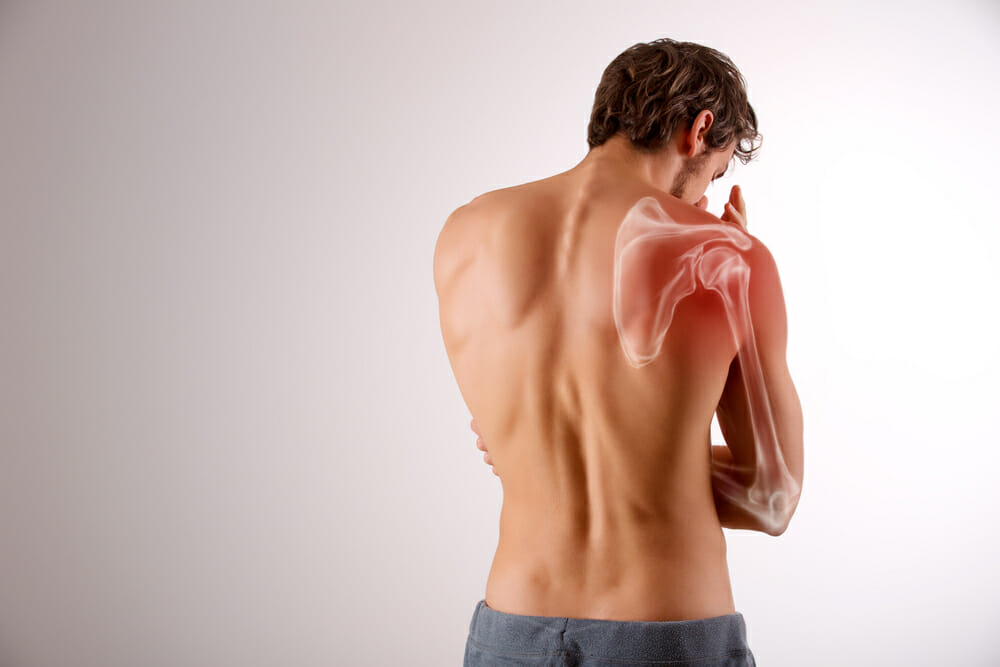
Subacromial pain syndrome, sometimes known as shoulder impingement syndrome, is a condition that occurs when the subacromial bursa (fluid-filled sacs that decrease friction) or the tendons of the rotator cuff become irritated and painful.
The rotator cuff muscles are a group of four muscles that support and move the shoulder joint. These muscles run from the shoulder blade to the top of the arm bone.
What causes it?
Subacromial pain syndrome (SAPS) occurs due to the overuse of or injury to a rotator cuff tendon, or irritation of the subacromial bursa in the shoulder joint.
The tendon that is usually affected is the one that is attached to the supraspinatus muscle which helps to raise the arm. This tendon is susceptible to irritation as it passes through a small space between the top of the arm bone and the point of the shoulder. This tendon can rub against the edges of the bony space with repetitive use, resulting in irritation.
Other common causes of SAPS include:
- Postural dysfunction—particularly increased thoracic kyphosis and “rounded shoulders”
- Tight shoulder muscles
- Repetitive activities that cause you to lift your arms overhead
- Incorrect exercise or sporting technique
- Anatomical variants, including a curved acromion or bony spurs
- Trauma such as a fall or a pull on the arm
- Muscle imbalance, such as tight pectorals and weak scapular stabilisers

Symptoms
Subacromial pain syndrome often causes pain in the top of the upper arm. This pain usually occurs when the arm is lifted above shoulder height and usually develops slowly over a period of time. Sometimes, the pain is only felt following exercise, and tightness or stiffness may also be associated with SAPS.
Other common symptoms associated with SAPS include:
- Pain when lying on the affected shoulder
- Pain or clicking sounds when reaching behind the body
- Muscle weakness
- Reduced range of motion and shoulder function
- Pain during rest when the condition becomes worse
- Sleep disturbance
- Neck and upper back pain or stiffness
Sometimes the initial symptoms of SAPS, or rotator cuff tendinopathy, are ignored as they often disappear quickly with activity or the application of heat—including taking a warm shower. However, when it is left untreated, the tendon and bursa irritation progresses, causing more frequent and intense pain. This can begin to affect performance and may eventually become debilitating.
If you’re experiencing any of these symptoms you should speak to your healthcare professional. X-rays, ultrasound or an MRI may be necessary to rule out other injuries.
Treatment
SAPS usually doesn’t get better on its own if the cause of the injury isn’t addressed. Your treatment will depend on many factors since there are numerous structures in the shoulder that may be affected. It’s important to speak to a healthcare professional to understand why the injury happened in the first place to ensure a successful short and long-term solution.
Corticosteroid injections may be considered at times depending on the type of injury and your unique condition. Surgical treatment is only considered if all other possible treatments do not relieve your pain.
At-home
The time it takes to heal from subacromial pain syndrome can vary between patients. However, to improve healing time it is essential to not continue the activity that caused the injury initially. Participating in overhead sporting activities will continually re-irritate the shoulder structures, increasing your pain and causing damage.
While the most important step in treatment is getting your pain properly assessed and diagnosed by a healthcare or sports medicine professional, some at-home treatments you can follow in the meantime include:
- Over the counter anti-inflammatory medication
- Applying heat and ice packs for 20 minutes a couple of times a day—ensure these are covered with a towel so they do not come in direct contact with the skin
- Rest
- Stop activities that cause you to reach over your head and behind your back—including anything that causes your shoulder pain

Physiotherapy
Physical therapy and exercise therapy for shoulder pain aims to restore normal function and eliminate pain. Improving posture, correcting faulty movement patterns, and restoring tissue flexibility with guidance from a physiotherapist can help resolve the condition quickly.
Some of the ways shoulder physio can help with subacromial pain syndrome include:
- Pain management—with the initial goal of reducing pain and inflammation in the affected area, while preventing any further tissue damage
- Strengthening exercise—this aspect not only helps to improve shoulder function but also makes significant differences in reducing the risks of shoulder disorders or other injuries in the future
- Correction of faulty movement patterns—this encourages the reinstatement of an individual’s normal patterns of movement in an effort to avoid future injuries
- Improving posture—an experienced physiotherapist will use techniques to help you to improve your posture, which works to ease pain and reduce the risk of further damage or injury. Posture is often affected by chronically tight muscles that prevent you from getting into an optimal position.
We can help with your shoulder pain
Don’t live life in pain. We can help find the root cause of your shoulder pain and help reduce pain and improve mobility. Book an appointment today.



